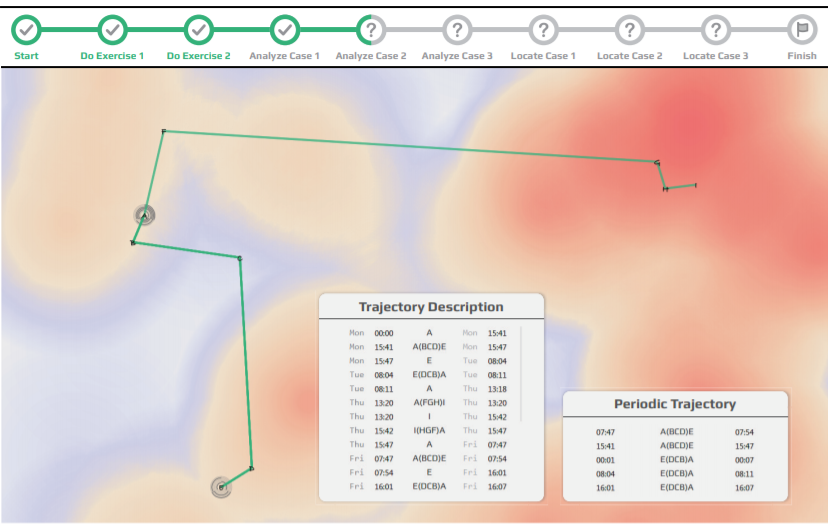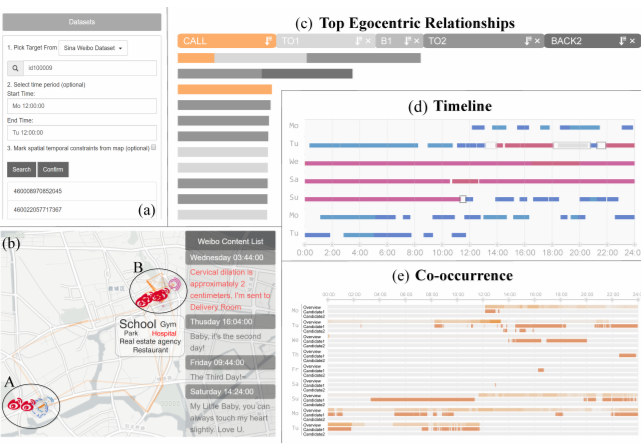# urban data

A User Study on the Capability of Three Geo-Based Features in Analyzing and Locating Trajectories
Authors: X Wang, T Gu, X Luo, X Cai, T Lao, W Chen, Y Wu, J Yu, W Chen
Visual analysis is widely applied to study human mobility due to the ability in integrating contextual information multiple data sources. Analyzing trajectory data through visualization improves the efficiency and accuracy of the analysis, yet may induce exposure of the location privacy. To balance the location privacy and analysis effectiveness, this work focuses on the behaviors of different geo-based contexts in the process of trajectory interpretation. Three types of geo-based contexts are identified after surveying 94 related literatures. We further conduct experiments to investigate their capability by evaluating how they benefit the analysis, and whether they lead to the location privacy exposure. Finally, we report and discuss interesting findings, and provide guidelines to the design of privacypreserving analysis approaches for human periodic trajectories.

Relationlines: Visual Reasoning of Egocentric Relations from Heterogeneous Urban Data
Authors: W Chen, J Xia, X Wang, Y Wang, J Chen, L Chang
The increased accessibility of urban sensor data and the popularity of social network applications is enabling the discovery of crowd mobility and personal communication patterns. However, studying the egocentric relationships of an individual (i.e., the egocentric relations) can be very challenging because available data may refer to direct contacts, such as phone calls between individuals, or indirect contacts, such as paired location presence. In this paper, we develop methods to integrate three facets extracted from heterogeneous urban data (timelines, calls and locations) through a progressive visual reasoning and inspection scheme. Our approach uses a detect-and-filter scheme, such that, prior to visual refinement and analysis, a coarse detection is performed to extract the target individual and construct the timeline of the target. It then detects spatio-temporal co-occurrences or call-based contacts to develop the egocentric network of the individual. The filtering stage is enhanced with a line-based visual reasoning interface that facilitates flexible and comprehensive investigation of egocentric relationships and connections in terms of time, space and social networks. The integrated system, RelationLines, is demonstrated using a dataset that contains taxi GPS data, cell-base mobility data, mobile calling data, microblog data and POI data of a city with millions of citizens. We examine the effectiveness and efficiency of our system by three case studies and user review.